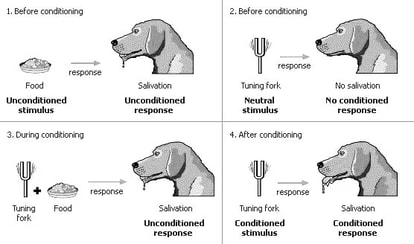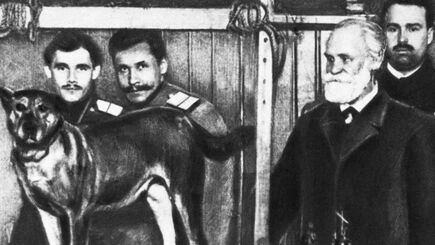IVAN PAVLOV BIOGRAPHY
|
Ivan Petrovich Pavlov was born September 18th, 1849 in Ryazan, Russia. He started school at the town church and then later went on to the theological seminary. In 1870, Pavlov left his religious ponderings and enrolled in physics and mathematics program. Pavlov became very interested in physiology and began studying the nervous system. He graduated from the program with a gold medal. Pavlov did not stop learning after graduating from the program and enrolled in the Academy of Medical Surgery. Upon graduating from the Academy, he earned a gold medal and a fellowship at the Academy as well as gained the title of Director of the Physiological Laboratory of a famous clinician. At the laboratory, he was able to research the nerves and nervous system further and presented his doctor's thesis on nervism in 1883. He wanted and did show that within our nervous systems, there was a basic pattern in our reflexes. In 1890, Pavlov helped to organize and direct the Department of Physiology at the Institute of Experimental Medicine which he continued with until the end of his life. Also in 1890, at the Military Medical Academy, Pavlov was appointed Professor of Pharmacology, which he was later promoted to Chair of Physiology in 1895. During this period of time, Pavlov had begun to research the secretory activity of dogs during digestion which led him to conducting his most famous study on the conditioned reflex. Pavlov published the results of this study in 1903 and received the Nobel Peace Prize for Physiology or Medicine in 1904. Many more awards and honors followed this study. Aside from his studies, he also married Seraphima Vasilievna Karchevskaya in 1881, and they had 5 children in total. He also publicly denounced the conditions of Russia at the time and very carefully criticized communism. Pavlov remained interested and devoted to his studies until his death from double pneumonia on February 27, 1936 in Leningrad.
|
RESEARCH AND STUDIES
|
Pavlov is accredited with the discovery of classical conditioning which pairs a stimuli with a conditioned response.
|
Most Famous Experiment:
Description: Studied the salvation of dogs when shown their food and a tuning fork. There was no response to the fork before conditioning, but there was to the food. He then paired the food with the fork in order to condition the dogs to connect the two objects. After conditioning the dogs to pair the two objects, the dogs would salivate at just the tuning fork. Aim: Researching the role of saliva in digestion IV: the stimuli (the food and the tuning fork) DV: The salvation of the dog Results: Found that you could condition the dogs to give a certain response. Significance: The discovery of classical conditioning |



